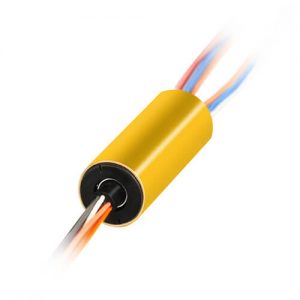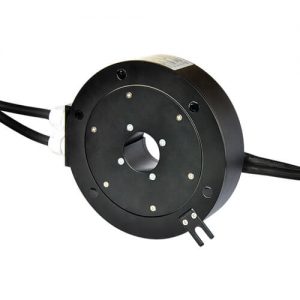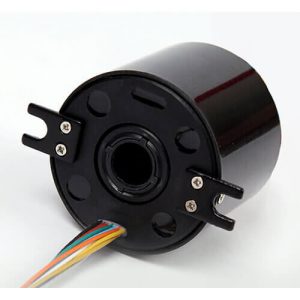As our understanding of and reliance on advanced technologies grows, so does our need to demystify the tools and components facilitating these advancements. One such component is the slip ring—an ingenious device imperative in many operational systems, particularly tire pressure monitoring in vehicles. This guide aims to explore, explain, and deepen the understanding of slip ring application in adjusting tire pressure—a topic at the intersection of mechanics, safety, and industry compliance.
Slip Ring and Adjusting Tire Pressure
In the ever-evolving world of technology and engineering, it is not uncommon for revolutionary inventions to fly somewhat under the radar despite their widespread utility. One such innovation is the slip ring, an unsung hero of electromechanical design that plays a critical role in many industries, including automotive applications involving tire pressure adjustments. In this guide, we aim to shine a light on this often-overlooked marvel by delving deeper into the importance of slip ring application in tire pressure management.
A Brief Overview of Slip Rings
At its core, a slip ring is a versatile electromechanical component that transfers electrical signals or power from a stationary structure to a rotating one. Enabling the continuous flow of data and energy while the connected parts spin, slip rings have become indispensable in numerous applications across industries.
The unique design of slip rings incorporates brushes that slide along a rotating surface, providing consistent electrical contact between the stationary and rotating parts. This ingenious yet straightforward construction allows slip rings to operate efficiently, providing a reliable connection between the moving and stationary components they serve.
The Significance of Tire Pressure
Tire pressure is of paramount importance for vehicle safety and performance. Maintaining the correct pressure in a vehicle’s tires can increase fuel efficiency, enhance handling, and reduce the risk of tire-related accidents. Inadequate tire pressure, whether too high or too low, can lead to premature tire wear, blowouts, and hindered vehicle control.
In light of the critical role tire pressure plays in ensuring road safety, automotive manufacturers and regulatory bodies establish strict guidelines and recommended pressure ranges for every vehicle type. Consequently, tire pressure management is essential in conforming to these guidelines while maximizing vehicles’ longevity and performance.

With a proper understanding of both slip rings and the importance of tire pressure, we can now bridge the gap to explore how these two concepts intertwine. The following sections will delve into the design and functionality of slip rings as they pertain specifically to tire pressure monitoring, their significance in maintaining accurate tire pressure, and real-world applications utilizing slip rings to optimize tire pressure management.
Slip Rings: Design and Functionality in Tire Pressure Monitoring
Delving deeper into the world of slip rings, it’s pertinent to examine their basic definition and functionality, as well as the various types that exist. A particular emphasis will be placed on their application in tire pressure management as this is the focal point of our discussion. Finally, we will address the key role of slip rings in facilitating data transmission and communicating vital tire pressure information.
Basic Definition and Functionality of Slip Rings in Tire Pressure Management
In the context of tire pressure monitoring systems (TPMS), slip rings serve as the link between wheel-mounted sensors and the vehicle’s stationary control unit. These wheel-mounted sensors measure the pressure of air inside the tires and continuously send that information to the control unit as the wheels rotate.
As electromechanical devices, slip rings establish electrical contact between the sensors and control unit, allowing for uninterrupted communication and data transfer. Thanks to their intricate design, slip rings can handle the energy and data transfer continuously, ensuring real-time, accurate information on tire pressure is sent to the vehicle control system—even as the wheels spin at high speeds.
Types of Slip Rings and Their Relevance in Tire Pressure Management
There are several types of slip rings available in the market, each catering to specific applications and space constraints. When discussing tire pressure management, the primary variants of slip rings to consider are:
Capsule Slip Rings: Compact and lightweight, capsule slip rings are ideal for applications where space is limited. They can fit unobtrusively within the wheel assembly without impeding its operation.

Pancake Slip Rings: Designed with a flat, disc-like form factor, pancake slip rings are engineered to minimize height constraints. This can be particularly useful when integrating a slip ring into a tire pressure monitoring system with limited vertical space.

High-Speed Slip Rings: Capable of maintaining consistent communication with minimal wear and tear even at elevated speeds, high-speed slip rings are well-suited for the demanding environments of tire pressure management systems.

Each type of slip ring offers unique features to address the technical requirements and physical limitations of tire pressure monitoring systems. Selecting the appropriate slip ring for tailoring devices is vital in achieving optimal performance.
The Role of Slip Rings in Facilitating Data Transmission and Communicating Tire Pressure Information
The effectiveness of tire pressure monitoring systems hinges on their ability to transmit data and communicate accurate information. Slip rings serve as the bridge that connects wheel-mounted sensors with the vehicle’s stationary control unit, enabling this essential data transfer. Their mechanical design facilitates reliable and continuous transmission, even as the wheels’ rotation could potentially hinder communication.
Thanks to slip rings’ unique construction and purpose-specific functionality, they play a central role in tire pressure management systems by ensuring accurate, real-time information, allowing drivers to promptly address pressure issues and maintain vehicle safety.
The Importance of Accurate Tire Pressure
The significance of maintaining accurate tire pressure cannot be overstated. Tire pressure refers to the amount of air pressure inside a vehicle’s tires, measured in pounds per square inch (PSI) or bar. Proper tire pressure is crucial for a vehicle’s overall safety, longevity, and performance. In this section, we will explore what tire pressure is, the risks and hazards associated with improper tire pressure, and the important role slip rings play in ensuring compliance with tire pressure regulations.
Explanation of Tire Pressure and Its Importance
Tire pressure is a crucial factor for maintaining a vehicle’s safety, fuel efficiency, and performance. By ensuring that tires are correctly inflated, the driver can expect enhanced handling, improved traction, and reduced rolling resistance, positively impacting overall fuel consumption. Moreover, optimal tire pressure also decreases uneven tread wear, extending the lifespan of the tires.
Conversely, improper tire pressure can lead to various problems and hazardous situations. To better understand its importance, we need to examine the effects of inadequate tire pressure maintenance.
The Effects of Improper Tire Pressure
Both overinflated and underinflated tires pose potential risks and hazards for vehicles in motion. Here’s a breakdown of the issues caused when tire pressure is not correctly maintained:
- Overinflated Tires: When tires are overinflated, they have a reduced contact area with the road surface, which can negatively impact the vehicle’s handling and traction. Overinflation can also cause uneven tread wear and lead to a harsher, less comfortable ride. In more severe cases, overinflated tires can be more susceptible to blowouts, jeopardizing vehicle safety.
- Underinflated Tires: Unlike overinflated tires, underinflated tires have an increased contact patch with the road surface. This increased friction can lead to overheating, which can cause structural damage to the tire. Furthermore, underinflated tires contribute to poor handling, reduced fuel efficiency, and rapid tire wear. In extreme cases, underinflation can cause tire failure and accidents.
It’s clear that maintaining appropriate tire pressure is essential for the safety and performance of any vehicle. But how do slip rings factor into this discussion?
Compliance with Tire Pressure Regulations
Automotive manufacturers and regulatory bodies across the globe have established specific tire pressure requirements for each vehicle make and model. These guidelines are crucial to ensuring that vehicles operate safely and efficiently.
Slip rings play an essential role in maintaining compliance with these regulations. By facilitating seamless communication between wheel-mounted tire pressure sensors and the vehicle’s stationary control unit, slip rings enable tire pressure management systems to function effectively. Drivers receive real-time information on their vehicle’s tire pressure, allowing for prompt corrective actions and staying within the parameters outlined by regulatory bodies. In short, slip rings help ensure that vehicles adhere to critical safety standards while maximizing their performance and longevity.
Incorporating Slip Rings in Tire Pressure Adjustment Systems
As fundamental components of tire pressure management systems, slip rings play an indispensable role in ensuring tire safety and vehicle performance. This section will discuss the role of slip rings within the larger tire pressure adjustment system, the benefits and advantages of using slip rings for tire pressure management, and guidelines on selecting the ideal slip ring for specific applications.
Components of Tire Pressure Adjustment Systems
Tire pressure adjustment systems, typically known as tire pressure monitoring systems (TPMS), are sophisticated setups comprising of:
- Tire Pressure Sensors: These sensors located in each wheel measure tire inflation levels in real time and relay this information to the control module.
- Control Module: This component receives, processes, and interprets data from the sensors, alerting the driver if tire pressure deviates from the specified range.
- Display: A visual indicator on the dashboard provides real-time data to the driver, giving alerts when necessary.
- Slip Rings: Serving as the vital communication bridge, slip rings continually transfer data from the wheel’s rotating sensors to the stationary control module.
In these systems, slip rings bear the critical responsibility of ensuring constant, reliable data transfer between the moving and static parts of the vehicle.
Benefits and Advantages of Using Slip Rings for Tire Pressure Management
The incorporation of slip rings into TPMS offers numerous benefits and advantages which include:
- Uninterrupted Data Transmission: Slip rings enable continuous and reliable transfer of tire pressure data, ensuring real-time updates and accurate readings.
- Enhanced Safety: By providing accurate, real-time tire pressure information, slip rings aid in maintaining optimal tire pressure. This ensures improved vehicle handling, reduced risk of tire-related accidents, and optimized fuel efficiency.
- Compliance: Slip rings help meet regulatory standards by ensuring that tire pressure is maintained within the specified range, facilitating compliance with safety regulations.
- Durability and Longevity: Slip rings are designed to withstand the demanding conditions inside a moving vehicle, providing reliable performance over extended periods.
Choosing the Best Slip Ring Solution
Choosing the right slip ring largely depends on the specific characteristics of the tire pressure adjustment system and other considerations such as the vehicle make and model, space constraints, speed, and power requirements:
- Size Constraints: Capsule slip rings are ideal for small spaces due to their compact design. On the other hand, Pancake slip rings, with their flat, circular footprint, are best suited for applications with limited vertical height.
- Performance: High-speed slip rings are capable of delivering consistent and durable performance even at high rotation speeds, making them suitable for most automotive applications.
- Power Requirements: Some demanding applications may necessitate the use of high-power slip rings. Therefore, considering the system power requirements is crucial.
In summary, integrating slip rings into tire pressure adjustment systems provides a reliable solution for ensuring continuous data transmission, maintaining vehicle safety, and complying with regulatory guidelines. Choosing the appropriate slip ring solution hinges on multiple factors, including the design requirements and the system’s performance needs.
Examples of Slip Ring Application in Tire Pressure Adjustments
Demonstrating the practical application of slip rings in tire pressure adjustments, this section offers an exploration of real-world examples and case studies. We’ll also broaden our view to include various industries and applications where slip rings play an integral role in maintaining optimal tire pressure.
Real-World Examples and Case Studies
- Automotive Industry: The most common application for slip rings is found within the automotive industry. Most modern passenger cars, trucks, and commercial vehicles utilize slip-ring-equipped TPMS to monitor and maintain proper tire pressure levels.
For instance, consider global automotive leaders like BMW, Mercedes-Benz, and Ford, they deploy slip rings in their vehicles to ensure that drivers receive accurate, real-time tire pressure data. This results in enhanced safety, reduced fuel costs, and optimal vehicle performance. - Racing Cars: In the world of motorsport, the importance of precise tire pressure is magnified. Minor deviances can significantly affect the vehicle’s performance, speed, and handling. Considering the high-speed environments these vehicles operate in, they usually use specifically designed high-speed slip rings. These slip rings can withstand high rotational speeds, delivering consistent data transfer rates without latency.
- Heavy Machinery and Construction Equipment: Large vehicles that operate in construction sites, like articulated dump trucks and wheel loaders, require constant monitoring of tire pressure to ensure stability and safety, mainly because these vehicles often carry heavy loads in challenging terrains. In these demanding environments, rugged slip rings capable of enduring extreme temperatures, vibrations, and dirt are utilized to ensure constant and reliable communication.
Industries and Applications
- Aerospace and Aviation: Slip rings play a significant role in the tire pressure systems of various aircraft, ensuring that the enormous weight of the aircraft is supported during landing and take-off. These slip rings are designed to meet the stringent safety, performance, and reliability standards required in the aerospace and aviation industry.
- Mining Industry: Mining trucks have massive tires, and a puncture or improper inflation can lead to severe accidents or delays in work. Here, slip rings enable the tire pressure monitoring systems to function effectively, ensuring that the tires are always operating within safe parameters.
By considering the various use cases and industries where slip rings are instrumental, we can better appreciate their important role in maintaining optimal tire pressure. Whether it’s a commuter’s vehicle, a high-speed race car, heavy machinery, or an aircraft, the common thread is the need for reliable, real-time tire pressure monitoring—and slip rings make it all possible.
Conclusion
As we reach the end of our discussion, it’s crucial to recap the significance and advantages of using slip rings in tire pressure adjustment applications. Furthermore, in closing, we’ll provide some final reflections on the subject matter and possible future advancements in the field.
Summarizing the Significance and Advantages
Slip rings in tire pressure adjustment applications are invaluable for several reasons:
- Uninterrupted Data Transmission: They enable continuous and reliable transfer of tire pressure data between the rotating sensors and the stationary control module.
- Enhanced Safety: By providing real-time, accurate information on tire pressure, they help ensure optimal vehicle handling and reduce the risk of tire-related accidents.
- Durability and Longevity: Slip rings are designed for durability and can withstand harsh conditions within a moving vehicle significantly, extending the lifespan of TPMS.
These highlights underscore the significance of slip rings in the mechanics of modern-day vehicles, enhancing safety and performance.
Final Thoughts and Future Developments
Undoubtedly, slip rings play a significant role in the smooth operation of TPMS across a wide array of applications. As technology advances, we’ll likely see innovations that will cumulatively improve the functionality of slip rings and consequently tire pressure monitoring systems.
For a customized slip ring quote, please fill out the form below.
Considering the ongoing development in material science and engineering design, it’s practical to anticipate the emergence of even more efficient, reliable, and durable slip rings. Meanwhile, advancements in wireless technology may also influence how slip rings evolve, potentially leading to hybrid systems that combine the best elements of wired and wireless communication.
In essence, slip rings within TPMS represent a fascinating fusion of mechanical and electrical engineering—a testament to how technology can work seamlessly to boost safety and improve performance in vehicle operations.
FAQs about Slip Ring Application in Adjusting Tire Pressure
In this section, we’ll address some of the commonly asked questions and misconceptions about slip ring application in adjusting tire pressure. Understanding these answers will clarify the utility and importance of slip rings in maintaining and monitoring tire pressure.
Q: What exactly is a slip ring, and how does it contribute to a tire pressure monitoring system (TPMS)?
A: A slip ring is an electromechanical device that allows the transmission of power and electric signals from a stationary structure to a rotating one. Within a TPMS, slip rings facilitate communication between tire pressure sensors, which are rotating with the vehicle’s wheels, and the control module, which is a stationary component within the vehicle’s main body. This enables real-time monitoring of tire pressure levels.
Q: Are slip rings necessary for TPMS, can we not do without them?
A: Slip rings are critical to the successful operation of a TPMS. Other methods of data transmission, such as wireless systems, exist, but they often come with limitations like latency, interference, and increased power consumption. Hence, slip rings remain the preferred choice for reliable, continuous, and interference-free data transmission in tires.
Q: With the advent of wireless technologies, will slip rings still be relevant in the future?
A: Despite advances in wireless technologies, slip rings remain essential for several practical and performance-related reasons. Wireless technologies can experience interference, and latency, and require more power for operation, which makes slip rings a reliable, cost-efficient, and low-power alternative that can operate in various environmental conditions.
Q: Are there different types of slip rings fit for different vehicles or situations?
A: Absolutely. Slip rings come in different types and specifications to fit diverse applications. Capsule, pancake, and high-speed slip rings are a few examples that are chosen based on factors like size constraints, rotational speed, and power requirements of different vehicles and situations.


